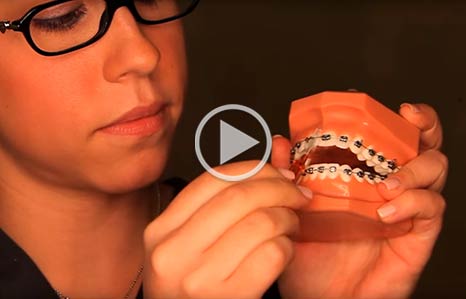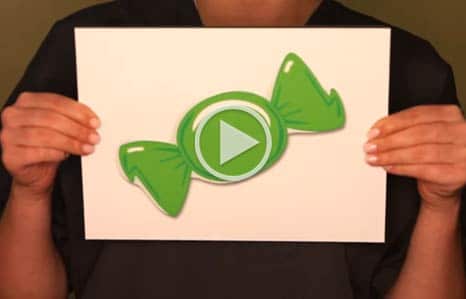How Orthodontic Treatment Works
Orthodontic appliances are made of metal, ceramic, or plastic. They may be removable or they may be brackets bonded to the teeth. By placing a constant, gentle force in a carefully controlled direction, braces slowly move teeth to the proper position.
Duration of Treatment
Treatment time varies and can last between one and three years, depending on several factors including age, treatment method, and how minor or severe your case is. A big factor in a successful treatment is you! The more involved and diligent you are, the more efficient your treatment will be. For children, receiving interceptive or early treatment can also help provide a quicker treatment time.
Before beginning your orthodontic care, your doctor will discuss all of your options and provide an estimate for how long your full treatment may take. Please contact our practice to schedule an appointment and learn more about orthodontics and the treatments we provide.
Brushing and Flossing
It’s more important than ever to brush and floss regularly when you have braces, so the teeth and gums are healthy during orthodontic treatment. Patients who do not keep their teeth clean may require more frequent visits to the dentist for a professional cleaning. Adults who have a history of gum disease should also see a periodontist during orthodontic treatment. Watch the two videos below on the proper care of braces during orthodontic treatment.
Eating with Braces
What can you eat? Let’s talk about what you shouldn’t eat! For the first day or so, stick to soft foods. Avoid tough meats, hard breads, and raw vegetables. Before long, you’ll be able to bite a cucumber again. But you’ll need to protect your orthodontic appliances when you eat for as long as you’re wearing braces.
Foods to Avoid
- Chewy foods: bagels, hard rolls, licorice
- Crunchy foods: popcorn, ice
- Sticky foods: caramels, gum
- Hard foods: nuts, candy
- Foods you have to bite into: corn on the cob, apples, carrots
Chewing on hard things (for example, pens, pencils or fingernails) can damage the braces. Damaged braces will cause treatment to take longer.
General Soreness
When you get your braces on, you may feel general soreness in your mouth and teeth may be tender to biting pressures for 3 – 5 days. Take Tylenol or whatever you normally take for headache or discomfort. The lips, cheeks and tongue may also become irritated for one to two weeks as they toughen and become accustomed to the braces. We will supply wax to put on the braces in irritated areas to lessen discomfort.
Loosening of Teeth
This is to be expected throughout treatment. Don’t worry! It’s normal. Teeth must loosen first so they can move. The teeth will firm up in their new — corrected — positions after treatment is completed.
Loose Wire or Band
Don’t be alarmed if a wire or band comes loose. This happens occasionally. If a wire sticks out and is irritating, use a blunt instrument (eraser end of a pencil) and carefully, gently push the irritating wire back under the archwire. Simply get it out of the way. If irritation to the lips or mouth continues, place wax or wet cotton on the wire to reduce the annoyance. Call our office as soon as possible for an appointment to check and repair the problem.
Rubber Band Wear
To successfully complete orthodontic treatment, the patient must work together with the orthodontist. The teeth and jaws can only move toward their corrected positions if the patient consistently wears the rubber bands or other appliances as prescribed. Lack of cooperation following instructions and damaged appliances lengthen the treatment time… so please … follow instructions.
Athletics
If you play sports, it’s important you let us know. A protective mouthguard is provided for playing contact sports.

